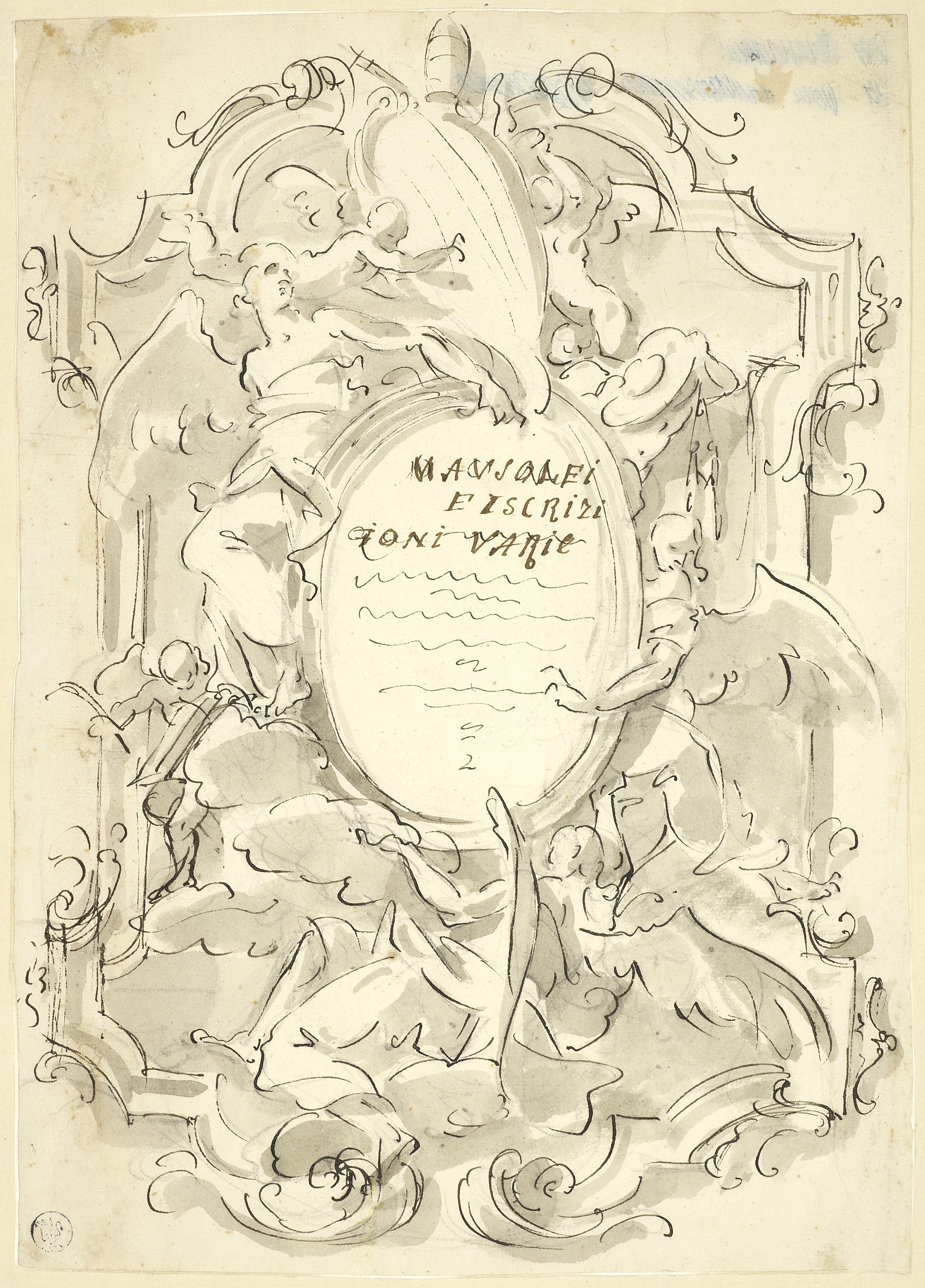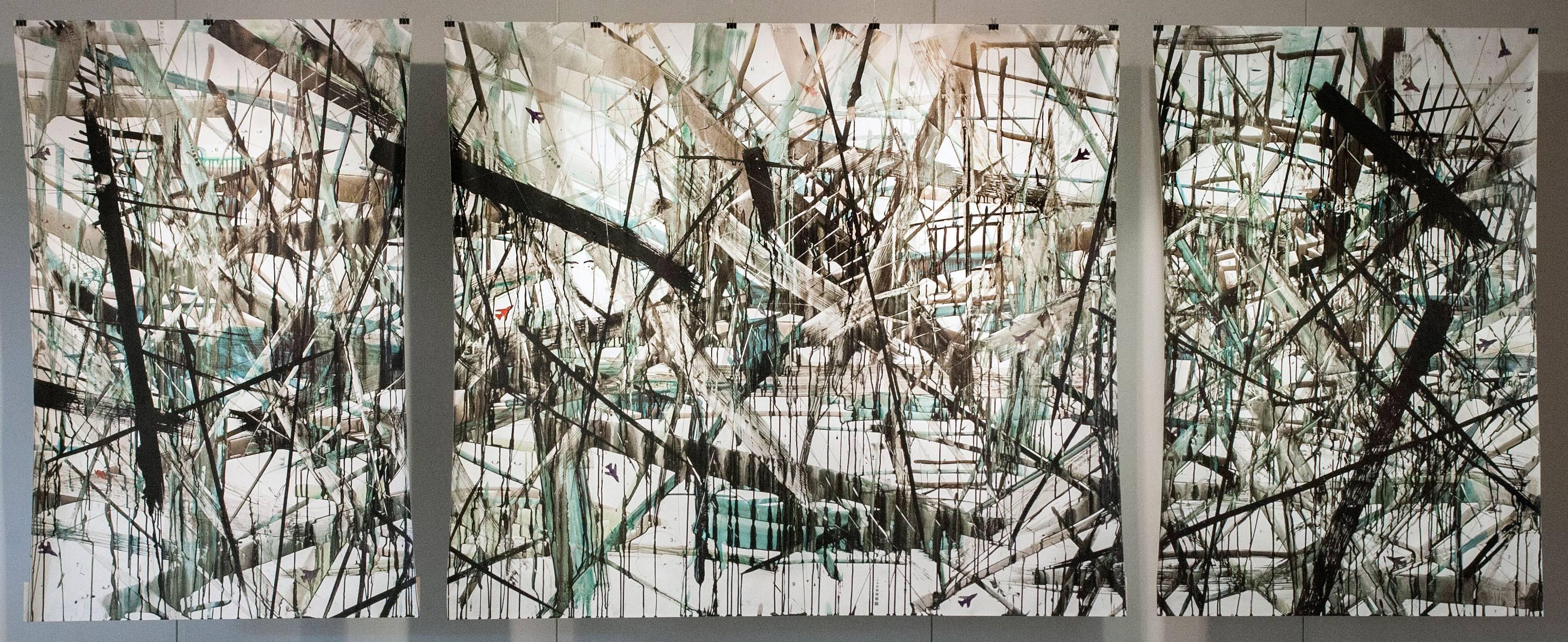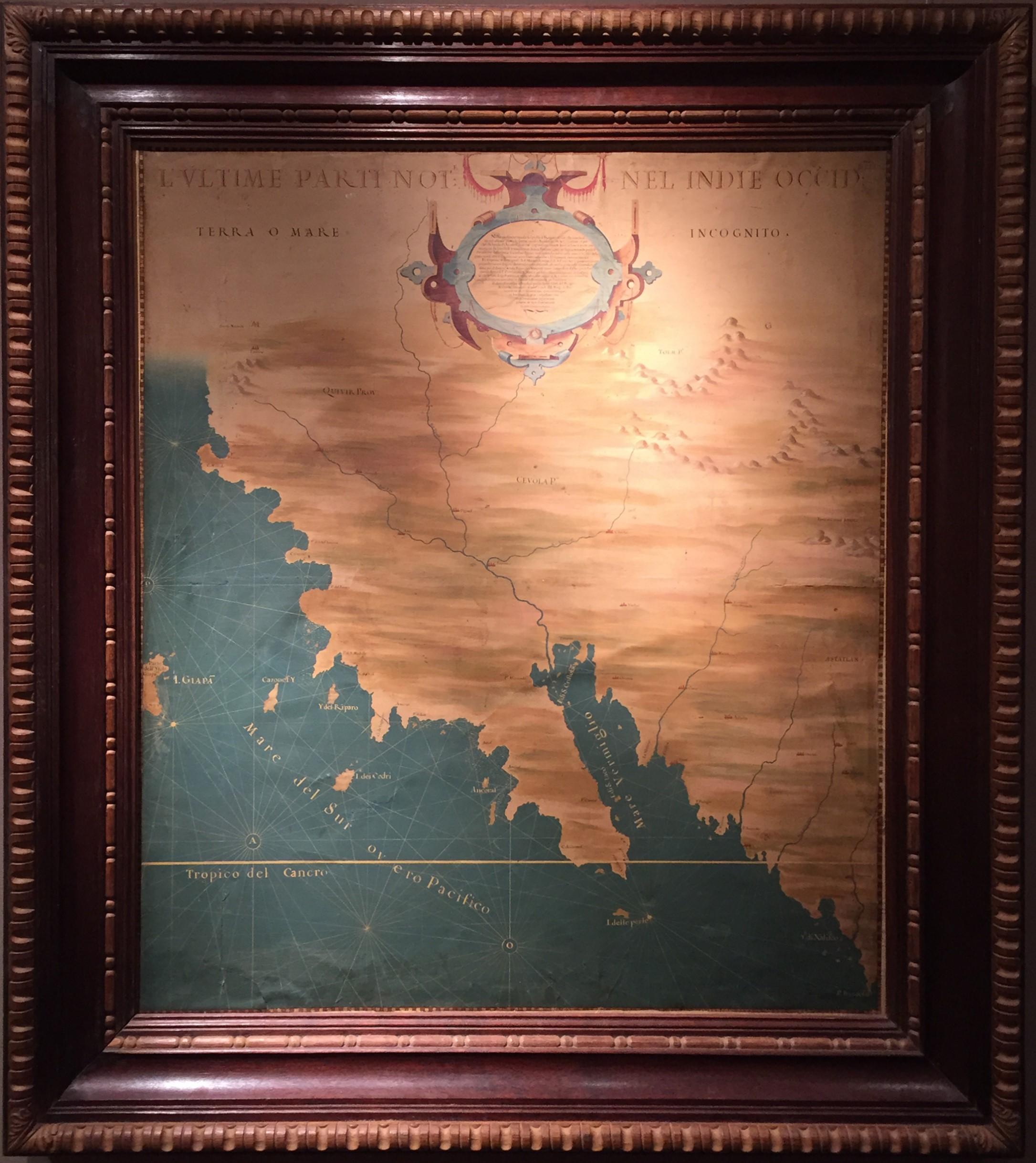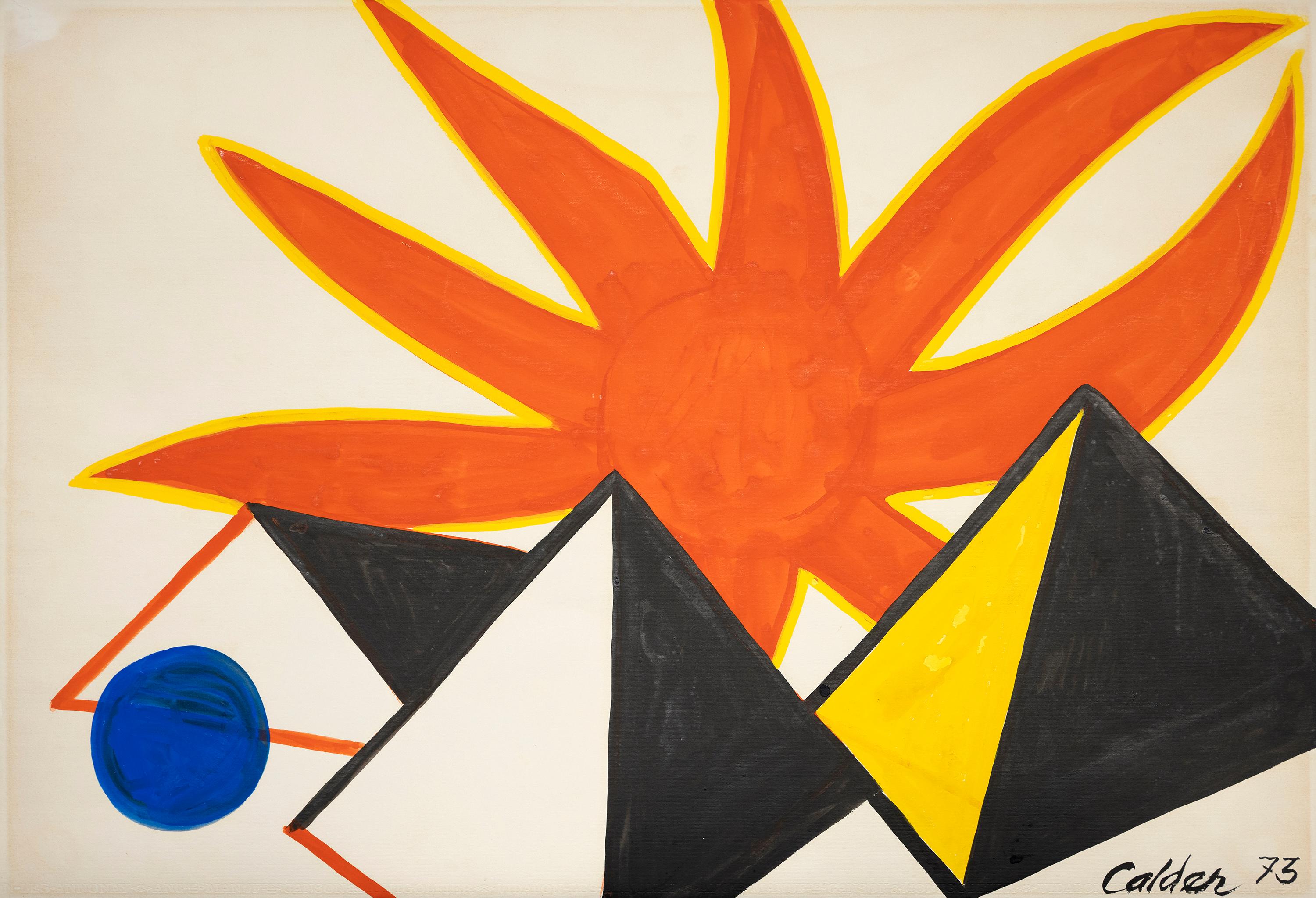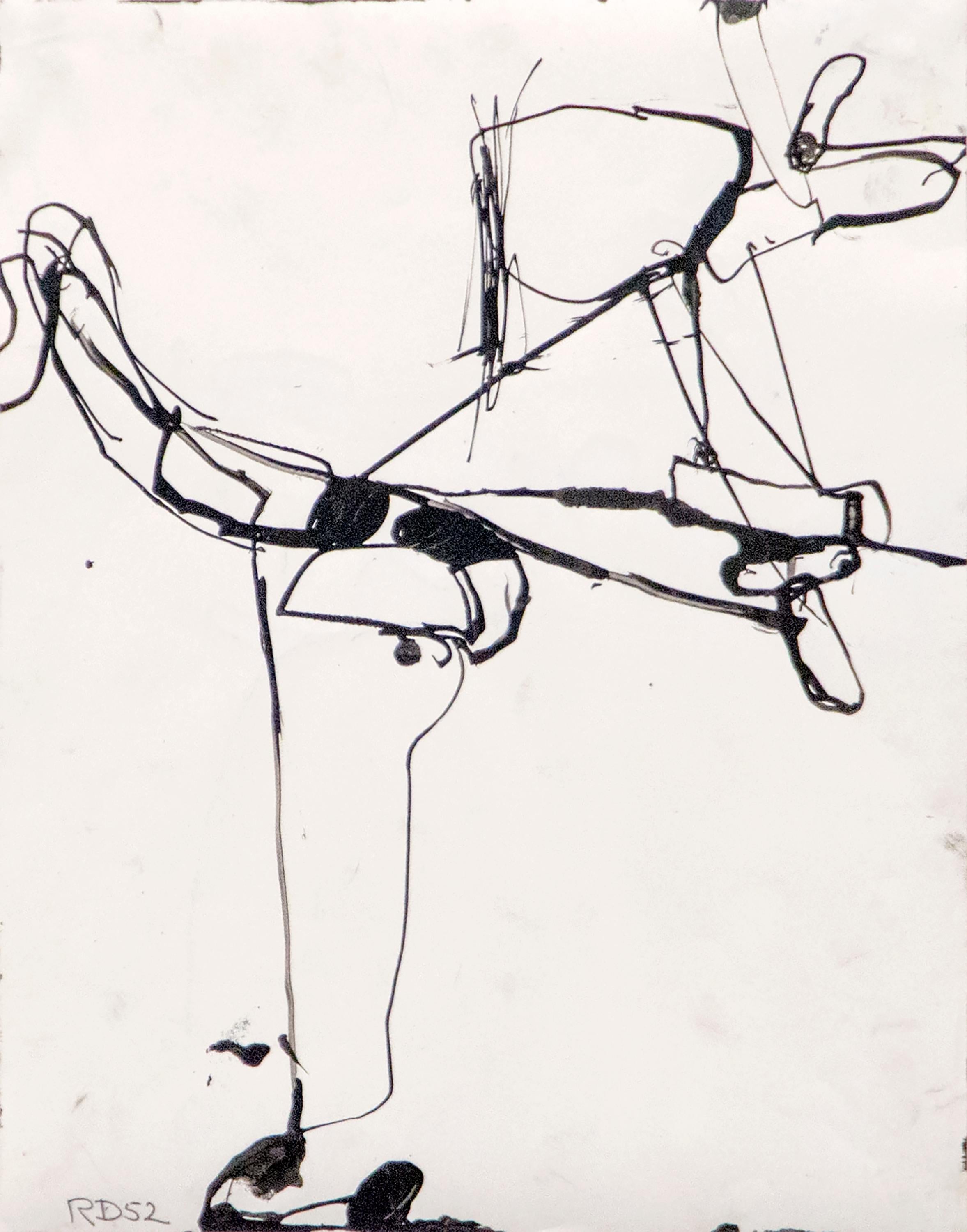Jean CocteauSouvenirs Du Pays Natal - Original China Ink Drawing by Jean Cocteau - 1920s1920s
1920s
About the Item
- Creator:Jean Cocteau (French)
- Creation Year:1920s
- Dimensions:Height: 10.04 in (25.5 cm)Width: 7.88 in (20 cm)Depth: 0.04 in (1 mm)
- Medium:
- Period:
- Framing:Framing Options Available
- Condition:Insurance may be requested by customers as additional service, contact us for more information.
- Gallery Location:Roma, IT
- Reference Number:
Jean Cocteau
Jean Cocteau was a French painter, poet, designer, printmaker, playwright and filmmaker. He is one of the most important figures of French Surrealism, although he always denied being in any way connected to the movement.
Cocteau was born to a socially prominent Parisian family. His father, George Cocteau, was an amateur painter who committed suicide when Jean was only a child. Jean became famous in Bohemian circles as "The Frivolous Prince." In 1912, he collaborated with the Ballets Russes. After World War I, Cocteau met the poet Guillaume Apollinaire and the artist Pablo Picasso. In 1917, thanks to Sergei Diaghilev, a Russian impresario, Cocteau wrote a scenario for the ballet Parade — the set of this important ballet was realized by Pablo Picasso and the music was composed by Erik Satie. In the late 1920s, Cocteau wrote the libretto for Igor Stravinsky’s opera-oratorio Oedipus Rex. In 1918, he met the French poet Raymond Radiguet. They worked and went on many journeys together, and Cocteau promoted his friend's works in his artistic group.
Cocteau is well-known for his novel Les Enfants Terribles (1929) and the films The Blood of a Poet, Beauty and the Beast and Orpheus. During World War II, he created sets for the Théâtre de la Mode. In 1955, he was elected to the Académie Française and the Royal Academy of Science, Letters and Fine Arts of Belgium. He was commander of the Legion of Honour, a member of the Academié Mallarmé, the Academy of Arts (Berlin) and the American Academy of Arts and Sciences.
Find Jean Cocteau art today on 1stDibs.
- ShippingRetrieving quote...Ships From: Rome, Italy
- Return PolicyA return for this item may be initiated within 14 days of delivery.
- Plants by the Sea - Original Drawing - 1950sLocated in Roma, ITPlants by the sea is an original china ink drawing realized by Unknown Artist in 1950s. The artwork represents beautiful plants. Good condition, no signature, mounted on a white ca...Category
1950s Modern Figurative Drawings and Watercolors
MaterialsInk
- Porcelain Elephant - Original Drawing - Early 20th CenturyLocated in Roma, ITPorcelain Elephant is an original drawing realized by Unknown Artist in early 20th Century. Beautiful colored watercolour and china ink drawing on ivory-colored paper. Includes pass...Category
Early 20th Century Modern Figurative Drawings and Watercolors
MaterialsInk, Watercolor
- Mythological Scene - Original Ink Drawing on Parchment by BuscotBy BuscotLocated in Roma, ITMithologic scene is an original artwork by the artist Buscot. Hand-signed on the lower right. Includes passpartout. Good conditions except for ink stains on the passpartout.Category
Mid-20th Century Modern Figurative Drawings and Watercolors
MaterialsInk, Parchment Paper
- Party - Original China Ink Drawing by Jeanne Daour - 1953By Jeanne DaourLocated in Roma, ITParty is a blue China ink original drawing realized on cream-colored paper by the artist Jeanne Daour (Bucharest,1914-?). Titled in pencil and in French on higher left margin. This...Category
Mid-20th Century Modern Figurative Drawings and Watercolors
MaterialsInk
- Moby Dick - Original China Ink Drawing by Flor David - 1950sBy Flor DavidLocated in Roma, ITMoby Dick is an original black China ink drawing on ivory glossy paper realized by Flor David in 1949. Hand-signed and dated on lower right. The paper is attached on a paper (48.5...Category
1950s Modern Figurative Drawings and Watercolors
MaterialsInk
- Je suis une détenue - Chap. XII - Original Drawing by T. van Elsen - 1950sBy Theodore van ElsenLocated in Roma, ITJe suis une détenue - Chap. XII is an original china ink and charcoal drawing realized during the 1950s by Theodore van Elsen. Hand-signed and titled on the back: "Je suis une déten...Category
1950s Modern Figurative Drawings and Watercolors
MaterialsInk
- Study for a Frontispiece, a baroque drawing by Giovanni Antonio PellegriniBy Giovanni Antonio PellegriniLocated in PARIS, FRThis masterly frontispiece study, executed with a very sure hand, testifies to the survival of the great Baroque taste in 18th century Venice. It could be one of the very last works by Giovanni Antonio Pellegrini: the few lines that cross the papal arms evoke those of Benedict XIV, who became pope in 1740, one year before the artist's death. 1. Giovanni Antonio Pellegrini and the European influence of Venetian history painting in the 18th century Giovanni Antonio Pellegrini was born in Venice in 1675 and trained in the studio of the Milanese painter Paolo Pagani (1655 - 1716). Pagani, who had been living in Venice since 1667, took him to Moravia and Vienna from 1690 to 1696. After a stay in Rome from 1699 to 1701, Pellegrini married Angiola Carriera in 1704, the sister of the great pastelist Rosalba Carriera. From 1708 onwards, Pellegrini left Venice and began an extensive tour of Europe: he worked in England between 1708 and 1713, where he met great success, particularly at Kimbolton Castle and Castle Howard. He then worked in Germany and the Netherlands, then in Bohemia and Austria, before returning briefly to England in 1719. In 1720 he was in Paris where he decorated the ceilings of the Royal Bank for John Law...Category
1740s Old Masters Figurative Drawings and Watercolors
MaterialsInk
- Junction Disjunction IVBy Eleanna MartinouLocated in New York, NYJunction Disjunction IV Ink on polypropylene 150 x 450 cm Eleanna Martinou was born in Athens (1981). Studied at the Athens School of Fine Arts (2006) and graduated with a MA in the...Category
2010s Abstract Abstract Drawings and Watercolors
MaterialsArchival Ink
- The 1564 Medici Danti Map of CaliforniaBy Fra Egnazio DantiLocated in New York, NYFlorentine, Probably Seventeenth Century Titled L’ultime parti note nel Indie occidentali Dated on the edge of the cartouche: “M.D. LXIII. M.AG” [1564…the month of August] In the 1560s Cosimo I de’Medici, the powerful Duke of Florence, undertook a major renovation of the Palazzo Vecchio, the venerable palace that to this day dominates the city at the Piazza della Signoria. For the Sala della Guardaroba, literally the wardrobe room, but in fact the storeroom of the Duke’s most precious holdings, Cosimo conceived of a grand decorative project that was to reflect in one space the entire cosmos --both an indication of the Duke’s ambition and an allusion to his name. The plan, supervised by Giorgio Vasari, involved the construction of walnut cabinets to contain the Medici treasures, on the outside doors of which were to be placed large hand-painted maps specially commissioned to document and illustrate the current knowledge of the world. Portraits of famous men were to decorate the tops of the cabinets and two large globes –one representing the terrestrial world, the other celestial—were to descend from openings in the ceiling. The commission for the maps, inspired by Ptolemy’s Geographia, was given to the celebrated mathematician and cosmographer, Fra Egnazio Danti (Perugia 1536-1585 Alatri). Fifty-three maps were ultimately created. Thirty were conceived and executed by Danti between 1563 and 1575. The remaining twenty-three were completed by Stefano Bonsignori between 1576 and 1686. They remain in place in Florence in the room for which they were created. The present work is an exact-size painted, drawn and inscribed copy of Danti’s map of California...Category
17th Century Old Masters Drawings and Watercolor Paintings
MaterialsCanvas, Pen, Gouache, Watercolor, Ink, Paper
- Wigwam rouge et jauneBy Alexander CalderLocated in Palm Desert, CA"Wigwam rouge et jaune" is a gouache on paper by Alexander Calder. The unique work is signed in the lower right, “Calder 65”. Although renowned for his innovative and groundbreaking...Category
1960s Abstract Abstract Drawings and Watercolors
MaterialsPaper, Ink, Gouache
- Three Pyramids + Blue BallBy Alexander CalderLocated in Palm Desert, CA"Three Pyramids + Blue Ball" is a gouache on paper by Alexander Calder. The work is signed in the lower right, "Calder 73”. Although renowned for his innovative and groundbreaking sculptures, Alexander Calder started his artistic career as an abstract painter, preferring to use gouache. What is gouache? Gouache is a water-soluble paint – a type of opaque watercolor. As Calder returned to gouache painting towards the end of his life, he was now armed with a lifetime of experience as a sculptor. He explored the three-dimensional vocabulary of sculptural forms he had developed onto the two-dimensional surface of the paper. Certain shapes and colors recur throughout his gouaches and sculptures. Circles, ovals, and other geometric forms dominate the space. There is the same sense of energy and fluidity. The shapes do not sit on the surface but vibrate giving a feeling of movement in contrast to the static nature of painting. Like his sculpture, Calder’s gouache...Category
1970s Abstract Abstract Drawings and Watercolors
MaterialsPaper, Ink, Gouache
- Untitled (Urbana Series)By Richard DiebenkornLocated in Palm Desert, CAA drawing by Richard Diebenkorn. This Untitled work from the Urbana Series is an ink of paper, abstract drawing by Post War, Bay Area Figurat...Category
1950s Abstract Expressionist Abstract Drawings and Watercolors
MaterialsPaper, Ink
